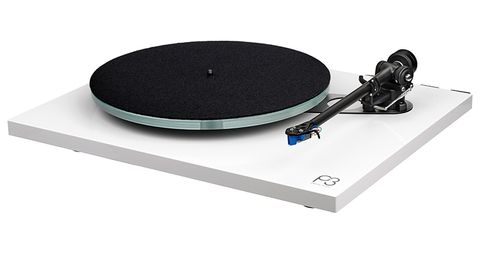Pioneer’s legendary PL-12D is often regarded as the best cheap belt drive ever produced, and for my money, it’s not far off. However, as with so many items, something else comes along a few years later that is superior in many aspects but doesn’t completely outclass it. The SR-222/II from Sansui is one such deck. It’s a slicker affair than the legendary PL-12, but the fact that it wasn’t the first to market – and didn’t copy the Pioneer in every way – has ensured its relative obscurity. As a result, it’s a steal — if you’re lucky, you can get one for £50 or less…
Being a ‘record geek’ in the 1960s was fine if you could afford a Garrard 301, a SME plinth, and a 3009/SII arm (with the obligatory Shure V15II), but those just getting started on the hi-fi adventure were confined to the likes of a BSR BDS80 or Garrard’s own SP25/III. These were an improvement over listening to your precious record on your sister’s Dansette, but not by much. When combined with a Sonotone ceramic cartridge, the sound is akin to growing a nail on your index finger and applying it sparingly as you span your disc on its axis. Budget decks of the 1960s were dreadful, and didn’t it show?
Then followed Pioneer’s PL-12, which debuted in 1973. Whereas the British were producing Neanderthal rim-drive ‘auto-changers’ with tonearms that could serve as tyre levers, this Japanese design had a solid belt drive mechanism and a low-friction S-shaped tonearm that could track at surprisingly low weights – all for £35. Pioneer took the formula, added an integrated pick-up arm, and slashed the price tag by a few bucks. Japan Inc. had been manufacturing some very slick belt drives for several years, modelled – if we’re being brutally honest – on Goldring Lencos, and Pioneer took the formula, added an integrated pick-up arm, and slashed the price tag by a few bucks.
As a result, the turntable became an instant ‘best of breed,’ a well-engineered turntable with true audiophile characteristics at a reasonable price. The PL12 smacked the competition in the face, and Pioneer couldn’t get enough of them. Rivals wanted a piece of the action, and Trio was first on the scene with its KD-1033 deck. This was no less deserving than the Pioneer, but it didn’t make a significant contribution to the breed. Then there was the Sansui SR-222. It featured a very smooth, clean, and warm sound, similar to the PL-12 and KD-1033, with no noticeable faults (such as wow and flutter) that plagued the previous generation of British budget fare.
The result was a powerful, punchy sound when paired with a Shure M75ED cartridge (a particularly symbiotic match, it must be stated). In fact, put any of these three (well set up with a good cartridge) up against today’s average CD player, and the record player would still be spinning in the early hours…
The SR-222 Mark II adds greater style and a gorgeous piano gloss black lacquer finish in 1978, and it’s the one to have. In terms of sound, it doesn’t quite match the series one Rega Planar 2, but the 452x139x370mm (6kg) deck looks nicer than the latter’s painted MDF. The 220m S-shaped stainless steel tonearm is fantastic — it’s a twist on the traditional Japanese Acos Lustre theme that produces excellent results with budget cartridges, though Rega’s own Lustre-built R200 (added to the Planar 2, at twice the price) proved even better.
The Sansui sounded exceptionally smooth and pleasant, thanks to its 300m diecast aluminium alloy platter and four pole AC synchronous motor. It lacks grip, incision, and focus by today’s standards, yet it nonetheless produces a pleasant musical “analogue” sound. You’ll notice a lack of dimensionality and limited frequency extremes by Rega standards, but because to its relative obscurity, it can be had for a third of the price of a great Rega. When paired with a good basic moving magnet cartridge like the Audio Technica AT-95E, you’ll quickly realize that it’s a gorgeous little vinyl spinner that’s well worth hunting for.






